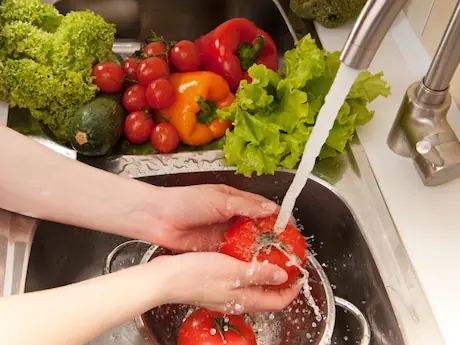
Restaurants, grocery stores, food processing plants, even your own home—food contamination can happen anywhere it's being handled, and it can lead to serious health problems. Food poisoning causes 48 million people to get sick and 3,000 deaths each year in the United States, according to the United States Department of Agriculture.
Foodborne illnesses can come from bacteria, parasites and viruses. The most common sicknesses are from bacteria, as thousands of types are naturally present in our environment. Microorganisms that cause disease are called pathogens, and when these enter the food supply, contamination can occur.
Food can have bacteria on it when you buy it. Raw meat can become contaminated during the slaughter process, and fruits and vegetables can become tainted when they're growing. Foods can become cross-contaminated from raw egg products, meat, poultry and seafood. Food handlers with poor personal hygiene or improper preparation, storage and cooking can also cause contamination.
Despite the possibilities of thes
More: 7 Ways to Eat Healthy for Life
Thawing Foods
When thawing foods, avoid potential contamination by not letting food sit on a counter at room temperature, as bacteria can grow quickly in these conditions. Thawing food on the counter also raises the risk of contaminating the counter, thus increasing the risk for other foods in the future.
Food Thermometers
Cook meat, poultry or seafood to the correct temperature by using a food thermometer. For steaks and chops of raw beef, pork, lamb and veal, cook to a minimum internal temperature of 145 degrees F. For raw ground meat, cook to an internal temperature of 160 degrees F. Cook all poultry to a safe minimum internal temperature of 165 degrees F.
- 1
- of
- 2
About the Author








Discuss This Article